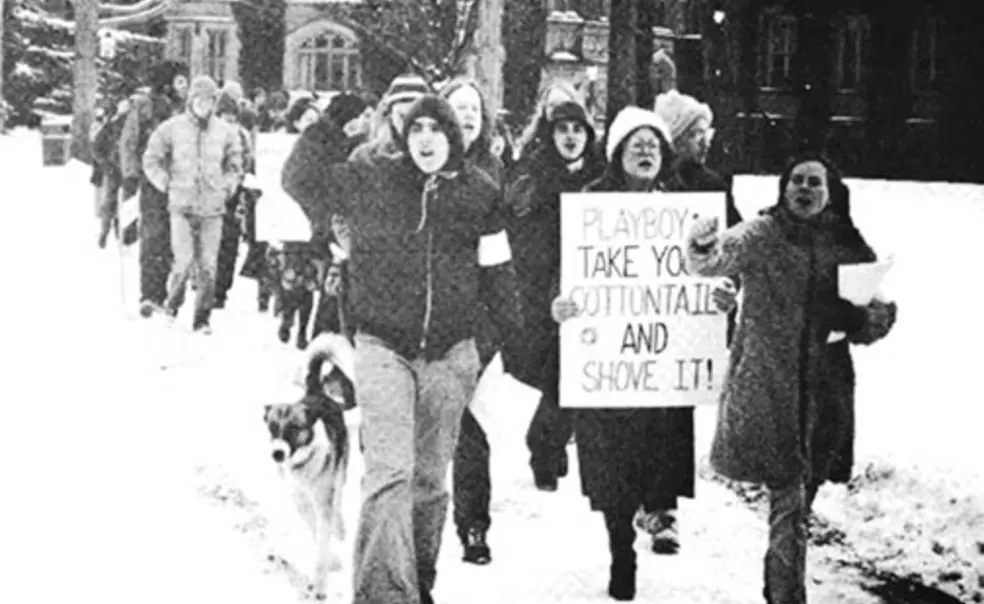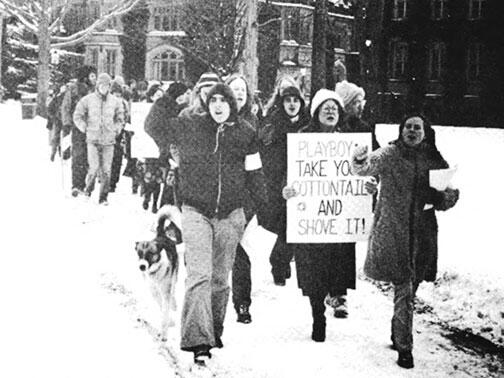One snowy day in the late ’70s, 90 women knocked on the door of Room 403 at the Nassau Inn, hoping to pose for Playboy, the iconic men’s magazine.
Staff photographer David Chan had come to town seeking models for a special “Girls of the Ivy League” issue. He told a reporter he was on a crusade to show the world that “the intelligent woman” is not necessarily “a spinster with a concave chest, Coke-bottle lenses, and her hair in a bun.”
Founded by Hugh Hefner in 1953, Playboy had become a much-discussed cultural phenomenon, dividing Americans into prudes versus sophisticates. When Firestone Library took out a subscription in 1968, it appeared sophisticates were gaining the upper hand.
The Princeton hopefuls who interviewed at the Nassau Inn weren’t in it for the money — Chan paid just $500 for a nude picture, much less for clothed. Instead, it probably was the thrill of being part of the Playboy phenomenon, then at its giddy height, with each issue selling 5 million copies. Three years earlier, even presidential candidate Jimmy Carter gave an interview to Playboy, acknowledging that he had “committed adultery in my heart many times.”
At Princeton, outside in the snow, 75 student demonstrators waved placards and chanted “Sexploitation has got to go!” The Women’s Center had organized the rally, furious that The Daily Princetonian had run Playboy’s advertisement soliciting models. The high-minded Harvard Crimson had refused.
Chan later said he found Princeton women pleasingly slim — at Harvard and Cornell “they’re a lot heavier” — but distressingly modest. In the end, three Tigers vamped in the magazine, all more-or-less clothed.
“Girls of the Ivy League” proved a newsstand hit, reported Prince journalist Elena Kagan ’81, destined for future judicial fame. Playboy twice visited campus in succeeding decades, amid further controversy.













No responses yet